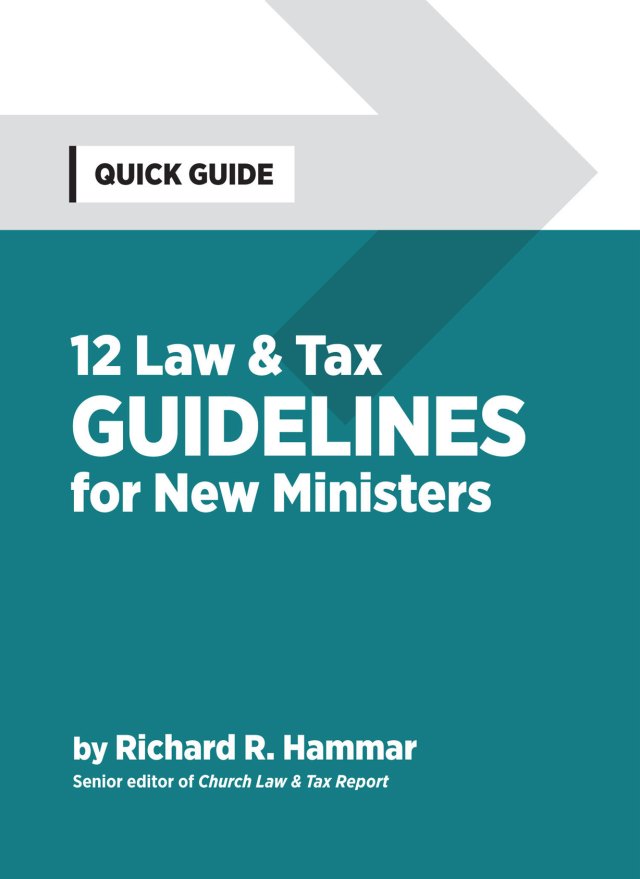Q: Unplanned repairs are part of homeownership. What can a church do to help with a big-ticket repair that wasn’t anticipated when designating the pastor’s housing allowance?
Let’s assume we’re talking about an $8,000 septic tank replacement. Let’s say the church agrees to increase the housing allowance for the remainder of the year by $8,000. Either the church can designate an additional $8,000 out of the pastor’s salary as housing or the church can give the pastor the $8,000 and call it housing-related.
From a tax perspective, it’s unlikely either approach will actually help.
Why? To understand, it’s necessary to understand how the housing allowance works.
A calculation game
The amount a pastor is allowed by the Internal Revenue Service (IRS) to exclude from income tax as a housing allowance is the smaller of three separate numbers:
- The amount the church designates as a housing allowance;
- The actual amounts expended on housing during the year, including mortgage payments, property insurance, property tax, utilities, repairs and maintenance, and furnishings; and
- The annual fair rental value of the home, plus utilities, plus furnishings.
Returning to the example above, assume that, regardless of which way the $8,000 is handled, the church designated a total housing allowance for the year, including accounting for the septic tank, of $40,000.
Other assumptions
Let’s further assume that, at the end of the year, the pastor adds up all of his or her actual housing expenses and the total is $31,000, plus the $8,000 septic tank repair, for total actual housing expenses of $39,000.
Finally, the pastor consults with a local real estate agent and determines that the annual fair rental value of his or her home, including the effect of the new septic system, is $25,000. Add to this amount an additional $3,600 in utilities and $2,400 in furnishings, and the fair rental value, plus utilities, plus furnishings is $30,000. This amount is well below the actual expenditures (when the septic tank is factored in) and the designated housing allowance amount.
The moral of the story is that the fair rental value, plus utilities, plus furnishings is always going to be a hard cap in terms of how much a pastor can exclude from income tax. That’s because this calculation usually comes in as the lowest of the three figures that need to be calculated. As this example illustrates, designating an additional amount as the housing allowance had no impact on the amount the pastor could actually exclude from tax.
‘Better than a stick in the eye’
Here’s another common example: A pastor wants to add a second story to a home at a cost of $60,000. Let’s say this pastor is making $150,000 a year, of which $40,000 is designated as housing allowance. The pastor comes back to the church and asks the church to bump up that housing allowance from $40,000 to $100,000. That may help to a degree, because a two-story house is going to have a higher fair rental value than a one-story house.
But the pastor is not going to get the full benefit that he or she anticipated getting because the fair rental value calculation still will come in below $100,000.
So, does this mean a big ticket expense is not going to really benefit a pastor?
As my dad would say, it’s better than a stick in the eye.
But the pastor ordinarily is not going to be made whole in the process from a tax benefit perspective. Subject to the general requirement that a church (or any nonprofit organization) not pay its key employees excessive compensation, the church can still provide more money to the pastor in response to the need. It just means the pastor will pay income tax on the added amount.
Also, in the above example, the church must also consider the reasonableness of the pastor’s overall compensation before providing more money.
Timing also matters
Remember a couple of additional things about how the housing allowance works.
- The housing allowance is always a prospective thing. The church must always award or pass a resolution to give a pastor a housing allowance on a prospective basis. It can never be applied retroactively.
- When changes to the allowance are needed mid-year, those changes also only take place going forward.
Something attorney and senior editor Richard Hammar deals with in the annual “Church and Clergy Tax Guide” is that we don’t have a lot of guidance from the IRS that explains whether a pastor has to have a match between the time he or she incurred expenses and the time he or she gets paid the allowance.
So, consult with a tax advisor.
Hypothetical scenario:
Let’s say a large church adds a new pastor midway through last year. Unfortunately, the church forgets to formally set the new pastor’s housing allowance for the first three months of the new year. In that scenario, the pastor has made several mortgage payments in the new year without the benefit of the allowance. So, the question becomes whether those mortgage payments are countable in the housing costs for the year. The answer? Consult your tax advisor.
Either way, the pastor should understand the mortgage payments may not be able to be claimed.
Again, that’s something the pastor and the pastor’s tax advisor must work out.
On the church’s side, I always tell the church, ‘Hey, you were going to give this (pastor) a $20,000 housing allowance and you didn’t do it in the first six semi-monthly pay periods of the year … let’s take that $20,000 and divide it into the remaining payrolls.’
By doing that, we’re giving the pastor the opportunity to decide, in consultation with a tax advisor, whether he or she wants to include those three months of housing expenses.
Q: Can a church declare 100 percent of a pastor’s compensation to be a housing allowance?
There is no legal impediment to do so, although it’s not advisable.
That’s because you’re relying on the pastor and his or her tax advisor to know the rules and exclude the proper amount. You’ve set them up to make a mistake.
In addition, if you offer benefits, such as health insurance for which the pastor must pay a portion, a healthcare flexible spending account, or a 403(b) plan with elective deferrals, the pastor must have cash salary, not housing allowance, from which to deduct these withholdings.
So, as a practical matter, declaring 100 percent of a pastor’s compensation to be a housing allowance would compromise participation in these benefit programs.




